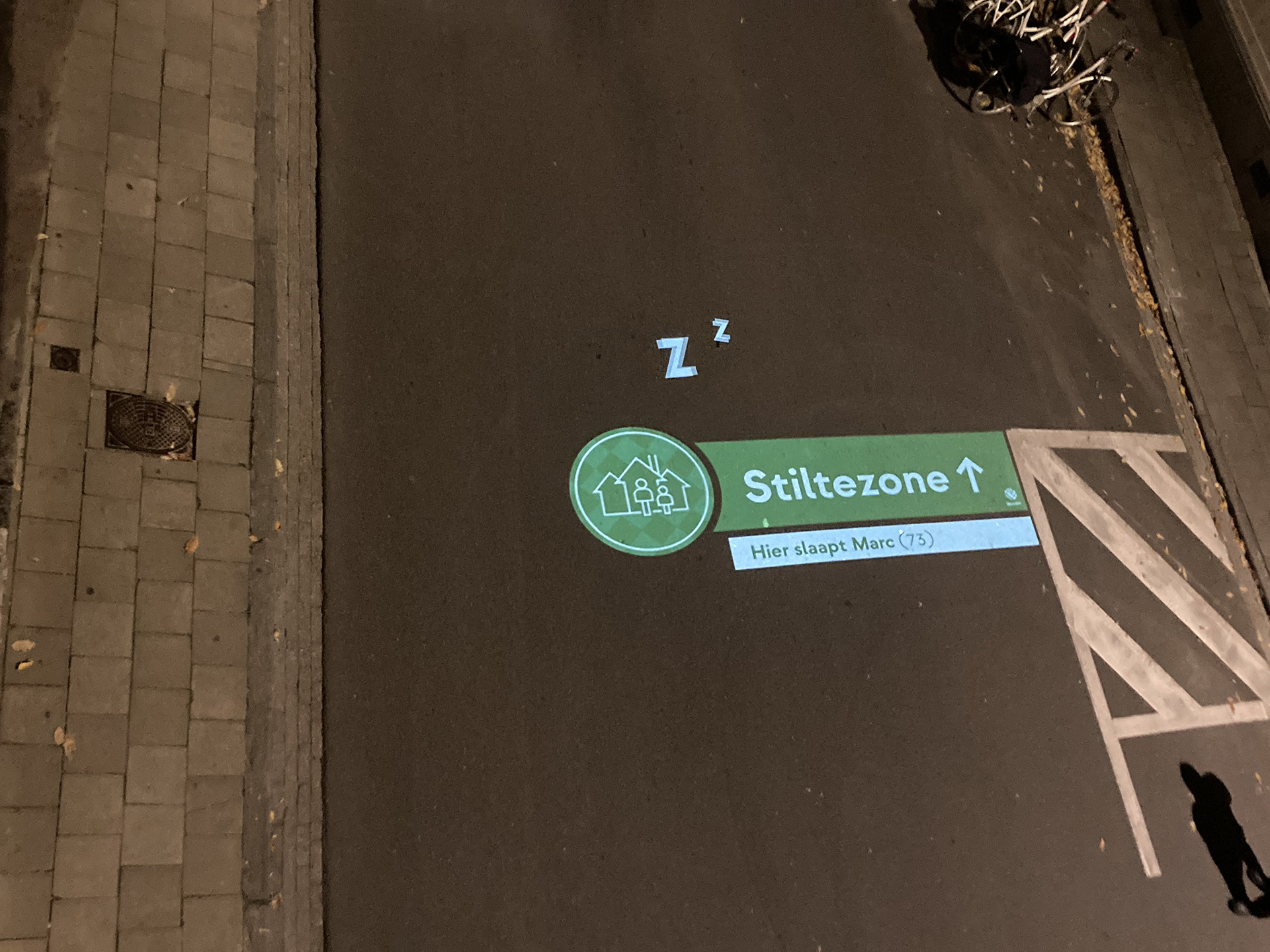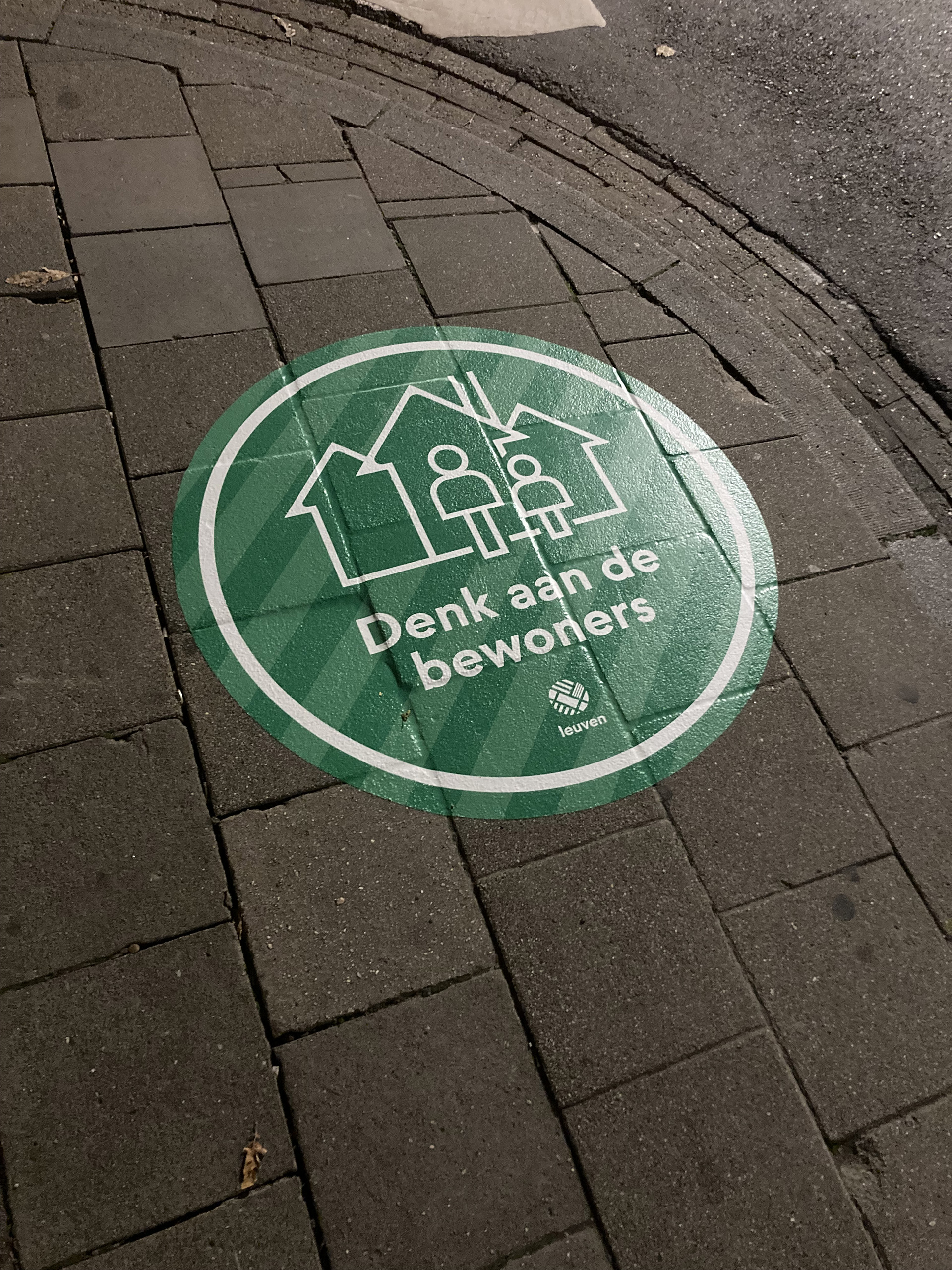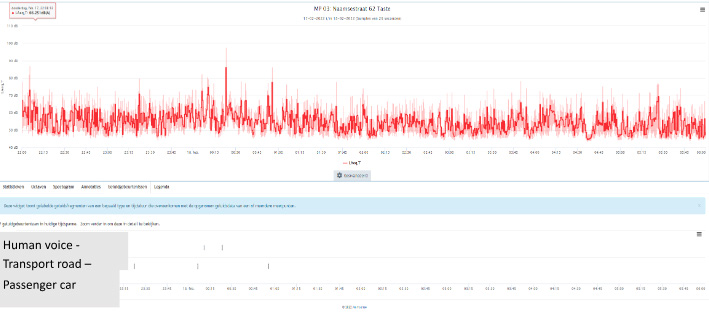Challenge & Context
Leuven is, at its core, a student city and is renowned for its vibrant student life. There are 65,000 students among a population of 100,000 inhabitants. In addition to their studies, students tend to party from time to time. Partying students can be quite loud on the way to a party or returning home. Given that the nightlife center is situated in the heart of the city, this can result in disruptive nighttime noise for the other residents of Leuven. These residents desire peace and quiet during the night to ensure a good night’s sleep. Insufficient sleep can cause health issues and can affect the co-existence between the partying students and the other citizens. With this project, Leuven aims to improve the quality of life for its residents.
Instead of punishing people after noise disturbances, the approach here is proactive, aimed at preventing students from making disruptive nighttime noise. Sound level sensors collect the level, pitch, type, and frequency of sounds to measure the noise in an objective way. No actual sound is recorded. Artificial Intelligence is then used to classify the noise’s origin, to determine whether it is human, music, or motor related. When the system detects disturbing nighttime noise originating from people, it employs nudging techniques. Nudging is the practice of changing people’s behaviour without limiting their options. Leuven utilizes several techniques that have been researched and tested, such as projecting animations and applying stickers on the streets, as well as dimming and intensifying public lights.
The noise monitoring, a FIWARE-compatible solution – funded by ‘Flanders Innovation and Entrepreneurship (VLAIO)’ and by the Department of Economy, Science and Innovation, was implemented from September 2021 to January 2023, sought to reduce the disruptive nighttime noises in the city streets.
It was tested on the pilot street, “Naamsestraat”, which is frequently travelled by people returning home after a night out. The residents in this area have been significantly impacted by the nocturnal noise, prompting regular reports to the police.
Solution
Sound level sensors are placed at several points along a specific street and connected to the Urban Sense data platform. As described above, these sensors provide an objective measurement of noise. When disruptive noises from people are detected, nudging techniques are deployed.
One approach consists of dimming or brightening the streetlights to alert the students of their disruptive behaviour and by projecting a message on the ground, signalling that the area is meant to be quiet. This message may highlight the presence of nearby children who need to attend school the following day or elderly people who need a peaceful night’s rest. Another nudging approach involves assessing whether the police can make interventions based on the real-time data, provided that they have enough manpower and can respond quickly.
Figure 1 . Example: projected animations. Translation of the text in the picture: “Silent zone from here. Marc sleeps here (73)”.
Figure 2 . Example: stickers on the street. Translation of the text in the picture: “Consider the residents.”
Through this approach, the city gains insights into what times and during which days disturbances are most frequently detected, and can test which type of nudge works best. The city can use this knowledge to anticipate when noise issues can be expected and take appropriate measures where necessary. By using these nudges, students who are partying too loudly are made aware of the need to be more considerate and quieter in their activities, respecting the well-being of other citizens. With this data, Leuven also developed a proof of concept predictive model for nighttime noise in the city.
The solution combined many city services, including prevention, environment, public lighting, and police services. Moreover, it fostered collaboration within the quadruple helix of the city, involving government, citizens, knowledge institutions, and businesses. On the business side, Leuven collaborated with Munisense, Sirus-Urban Sense, Inetum-Realdolmen, Tabula rasa, Claytech, Fosfari lighting, Fluvius and Urban Sense. The university KU Leuven also played a crucial role in testing, providing advice, and conducting research. Additionally, students, student organizations, and residents of the pilot street were also involved.
Urban Sense is an innovative consortium between Cegeka and Sirus. This data platform for cities and municipalities is designed to unlock the value of all possible types of data and helps pave the way for the smart cities of the future. The platform offers a variety of applications: including analytical and visualization tools, data science and AI capabilities, as well as the development of applications, services, and predictive modelling. Knowledge and cost sharing are central elements of the platform. Urban Sense onboards business cases from different domains onto the platform with minimal administrative actions, catering to a wide target audience.
How it works
The data is collected through several sound sensors provided by Munisense. This data is then pre-treated and made available via an AMQP (Advanced Message Queuing Protocol) queue. These messages consist of raw data, including sound recordings in various formats such as Laeq, LAF, Lceq, Laeq Moving AVG 15min, and more.
The Urban Sense platform, developed by Sirus and Cegeka, subscribes to the AMQP queues using Apache NiFi, a data integration tool. The data is fetched from the AMQP queue and stored on an Apache Kafka topic, which is a distributed streaming platform designed for raw data. Kafka is used so that multiple consumers can pick up the data when they want and process it at their own pace. At the same time, it also serves as a buffer between the various processing stages conducted by Urban Sense company on the data. Next, the raw data is transformed into NGSI-LD. It was used a NiFi flow to achieve this. In NiFi, the data is fetched from the Kafka topic containing the raw data. Data are enrich with additional information for each noise level sensor from our custom fact store. This information includes location data in the form of coordinates for the sensor. The results are once again stored on another Kafka topic containing the NGSI-LD formatted data.
In the final stage, the data is made available for consumption. There are two NiFi subprocesses for reading or consuming data from the Kafka topic containing the NGSI-LD data. One of these processes immediately writes the incoming NGSI-LD data to the Scorpio Context Broker, which is a FIWARE generic enabler.
Scorpio is an NGSI-LD broker that enables managing and requesting of context information. The context broker in Urban Sense has been set up to contain only the most recent data.
The other process batches the data in bundles and stores it in an Azure data lake. Data is bundled into one file every 15 minutes. The data stored in the data lake is intended for long-term archiving, so that historical analyses can be made. Storing data in a data lake also provides more flexibility for future analysis and processing.
Given that Sirus is a Microsoft Solutions Partner for Data and AI, Sirus have chosen to run this solution on Microsoft Azure.
For Sirus to actually control the street lights, there is another separate flow. This flow also reads an AMQP queue with noise events, such as a person shouting or a vehicle, in NiFi. In this flow, several conditions are examined, including whether it’s a person’s vocalization, whether it’s nighttime, and whether there has been a trigger within the past hour. If the conditions are met to trigger the lighting, an intensifying or dimming of the street lighting will be initiated. This operation is carried out through a Python script that calls the API of the streetlight provider, Remoticom, to control the lighting.
In the illustration below, you can see how sound levels are measured based on Laeq. This is a parameter that quantifies the continuous equivalent noise level over a period of time, expressed in decibels.
Figure 3 . Sound level
Benefits & Impact
With this FIWARE-based solution, the partners involved were able to identify disruptive nighttime noises automatically, without anyone having to officially report them. This provided valuable insights into the origins of the disturbances, enabling Sirus’ customers to be more responsive in their policy making.
Key findings regarding nighttime noise included occurrences:
- were more prevalent on Wednesday, Thursday and Friday nights.
- were more prevalent before 2 a.m.
- were mainly caused by transportation and people shouting or singing.
The tested nudging techniques showed a positive impact on nighttime noise levels. The message resulted in a 30% reduction to nighttime noise, particularly before 1 a.m., originating from people shouting or singing. This is a significant improvement for the residents of the neighbourhood as it will enhance their sleep quality, subsequently contributing to a higher quality of life for citizens.
It is technically possible to have the police make interventions based on real-time data. However, when police arrive at the location, most of the individuals responsible for the disturbances have already departed. Thus, this approach is only practical when there is sufficient manpower and a short response time.
Added value through FIWARE
Sirus is a Gold Member of FIWARE and has been working with FIWARE components for many years. The solution is entirely based on open standards, aligning with the principles set forth by FIWARE.
The main added values are as follows:
- Shared data streams: Cities generate tons of structured and unstructured data each day. The diversity of this data makes it very complex to acquire the necessary insights to support decisive policy making. The data platform allows a data stream to be onboarded only once and then made available to other cities. This approach significantly enhances the efficiency of data handling.
- Reducing costs: The adoption of an Open Source platform reduces implementation costs.
Open ecosystem: Cities aim to involve local partners as part of their digitization strategies. The platform facilitates connections with other platforms and third-party solutions through open APIs. - Enhancing collaboration: The Open Source platform provides the framework for different cities to collaborate on various scenarios. Its architecture is designed to offer flexibility in terms of connecting, sharing, or separating data.
- Accessibility: The platform ensures that all authorized users see the same uniform data and can work together on policy objectives.
Next Steps
Leuven is already planning to expand this solution to other streets. Sirus aims to grow the Urban Sense Platform and onboard more cities to help them gain more insights into their data and further improve their citizens’ quality of life.
By adopting this platform, these cities can actively exchange knowledge about common issues that most urban areas encounter. Themes such as urban mobility and traffic, energy, safety, sustainability, waste management, quality of life, local economy, citizen participation, crowd management, noise pollution, and water management are of shared concern among all cities and their inhabitants.
References
- Urban Sense: noise monitoring.
- City of Leuven: Reducing nightly noises with technology. Nachtlawaai verminderen met technologie | Stad Leuven
- VRT News: Leuven deploys smart technology to tackle nighttime noise. Leuven zet slimme technologie in om nachtlawaai aan te pakken | VRT NWS: nieuws
- Context broker Sirus: NGSI-LD Context Broker (sirus.be)



